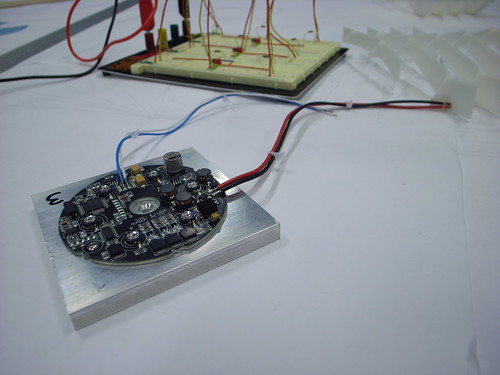It's been a while that "On Futures and Design" by Alex Soojung-Kim Pang was stuck in my RSS reader. Finally got some time to read it. In this article, Alex examines the role of design in futures research and how both field can be beneficial to each others.
 (Crafted piece of the future at LDM, EPFL in Lausanne)
(Crafted piece of the future at LDM, EPFL in Lausanne)
In the first part of the paper, he shows how research techniques developed by designers (especially those about human/device interactions, i.e. user research) is of interest for technology forecasting. The main issue in forecasting is that people have the tendency to base forecasts exclusively on technology trends. This determinism makes futurists stating that "mobile technologies will turn us into postmodern nomads, wanderers as disconnected from place as we are wired into the electronic hive mind". This connects to what I described last week in my Lift talk about the fact that forecasting is framed into a certain mindset, a "zeitgeist" that only see certain aspects shaping the future (yesterday nuclear power, today the power of networks for instance). Alex's point is that "the relationship between technology-- especially information technology-- and people is considerably more complicated". And if one wants to highlights possibles futures path, it's important to "go below broad trends in order to understand how technologies and people interact". What does it mean more concretely? Simply that it's important to look at "how technologies are used, how they're integrated (or not) into products, and what prior concepts or mental models users bring to new devices or products". This is where designers come into play: their approach to deal with these issues is fundamental and can be transferred to futures researchers.
The second part of the paper deals with the contribution futures research can make to design. The authors takes the example of how "we can create devices that make the long-term consequences of day-to-day actions visible to users".
And finally, in the last section, Alex points out how "the ability to create devices that give users a feel for the future, for the cumulative long-term impact of small changes, and for the collective impact billions of such choices could have on the world, is the most important and exciting development for futurists since the invention of oracle bone". He shows that beyond white papers and dense powerpoint slides there is a need to change the way futures researchers work and communicate their thinking. Learning to talk about the future through things is a new and exciting direction. This does not mean that futurists should become designers, it's instead a call to renew the tools, methods and collaboration by benefiting from a neighboring field.
Why do I blog this? this short article features an exciting agenda for futures research. What is perhaps controversial in this pieces is the fact that futurists can learn from ethnography/user research. This is something new I agree with. There is therefore some methodologies to rethink about this issue, related with what Jason Tester defined in his blogpost called "the case for human-future interaction.
Besides, I would be interested in how designers can think and write about it, perhaps to exemplify how, as designers, they would expand on how futures research can benefit to them.
On a different note, I am still looking for papers and references about how futures research can be described as a specific form of "long-term design" (a topic that Bill Cockayne addressed in his Lift08 speech last year).